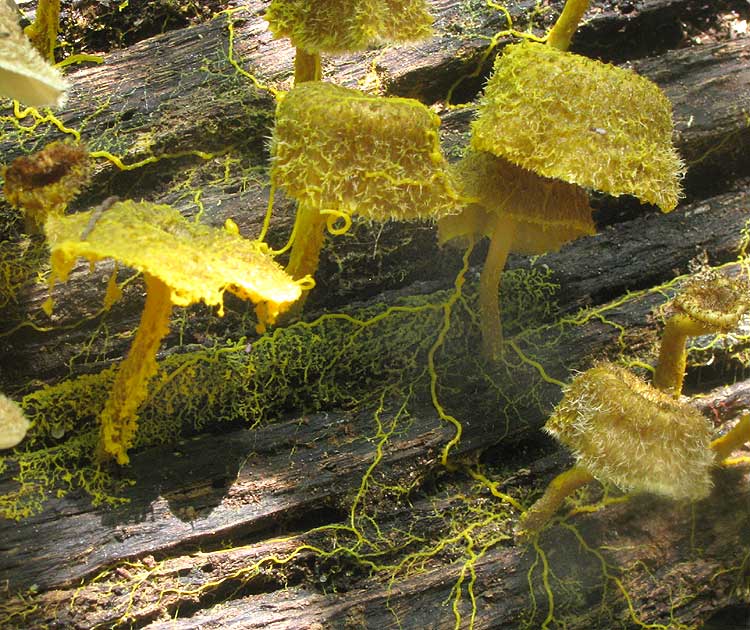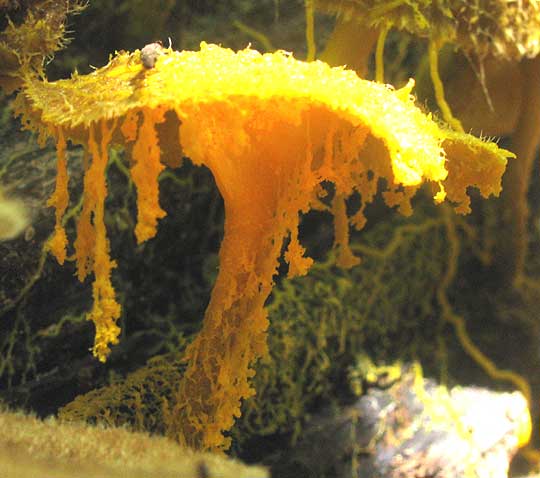Excerpts from Jim Conrad's
Naturalist Newsletter

from the August 12, 2012 Newsletter issued from the woods of the Loess Hill Region a few miles east of Natchez, Mississippi, USA
SLIME MOLD ATTACKS MUSHROOMS
This April we looked at a slime mold attacking another slime mold, as detailed at https://www.backyardnature.net/n/x/dogvomit.htm. Part of the big population of Lentinus crinitis mushrooms we saw this week similarly was being attacked by a slime mold, as rather dramatically shown below:

We saw above that Lentinus crinitus is basically white with a hairy, gray-black cap. In this picture the entire mushroom is covered and dripping with orange slime mold. In fact, a mushroom-populated area the size of a breadbox was orange with slime mold, as if someone had splashed a glass of orange paint there, as shown at the top of this page.
We've seen that slime molds -- which are not fungi, plants or animals, but rather their own thing -- wander about like streaming trickles of gelatin, their moving, much branched bodies called plasmodia. In the last picture, plasmodia creep across the log's moist surface and up onto the mushrooms, feeding as they move. When conditions begin drying out the plasmodia will aggregate and form fruiting bodies of various shapes and colors, depending on the species, and that will be their reproductive stage. Not having the fruiting body, I can only guess that our species producing these plasmodia is a member of the genus PHYSARUM, because that's a common genus and at least some of its species produce orange plasmodia.
What a drama! Here the Lentinus mushrooms are prey to the more mobile slime mold plasmodia, who wander as predators. On the log nothing seems to be moving, yet what we see is an attack in progress, a fight to the death between two species in competition for scarce resources -- in this case nitrogen, phosphorus and other nutrients the mushrooms glean from the log, and which the slime mold is disposed to steal, by force.